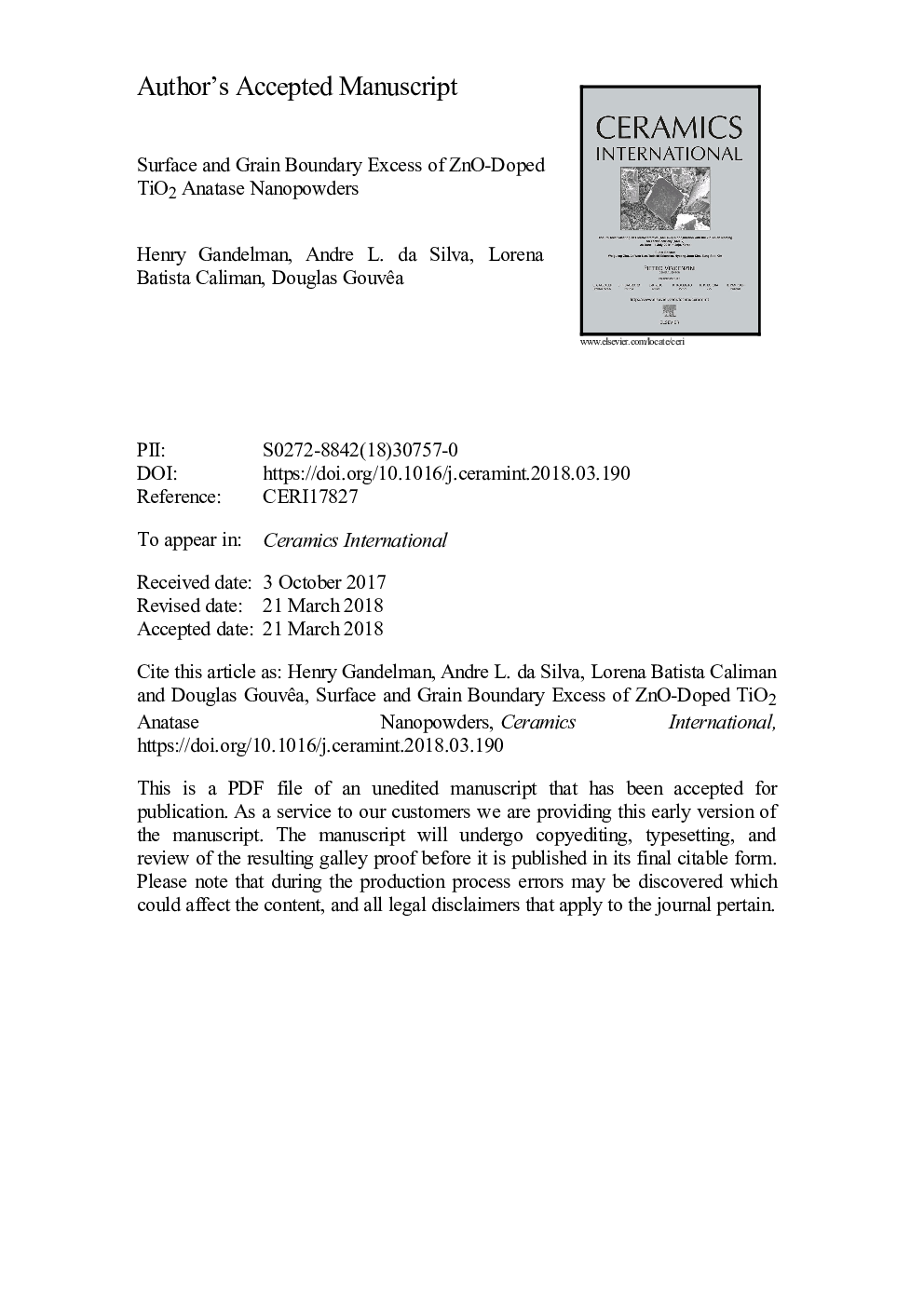| Article ID | Journal | Published Year | Pages | File Type |
|---|---|---|---|---|
| 7887004 | Ceramics International | 2018 | 28 Pages |
Abstract
In this study, TiO2 nanoparticles containing 0-10â¯mol% ZnO were synthesized using the polymeric precursor method. The surface excess of ZnO on the TiO2 surface was measured by the selective lixiviation method, and the grain boundary (GB) excess was calculated considering the total amount of ZnO and its solubility in the TiO2 bulk. The results showed that ZnO segregates on both the surface and GBs of the TiO2 nanopowder and that the GBs are richer in ZnO at high ZnO concentrations. X-ray photoelectron spectroscopy (XPS) analysis confirmed that ZnO segregated on the TiO2 surface. However, after acid lixiviation, the same analysis showed a considerable reduction of the surface concentration of ZnO. A systematic reduction in the crystallite size and an increase in the specific surface area of TiO2 were observed when increasing the ZnO concentration, which confirms the nanoparticle stability provided by the interfaces enrichment with ZnO. By measuring the electrophoretic mobility, it was possible to show the changes to the surface composition of the TiO2 nanoparticles and the pH for ZnO solubilization.
Related Topics
Physical Sciences and Engineering
Materials Science
Ceramics and Composites
Authors
Henry Gandelman, Andre L. da Silva, Lorena Batista Caliman, Douglas Gouvêa,
